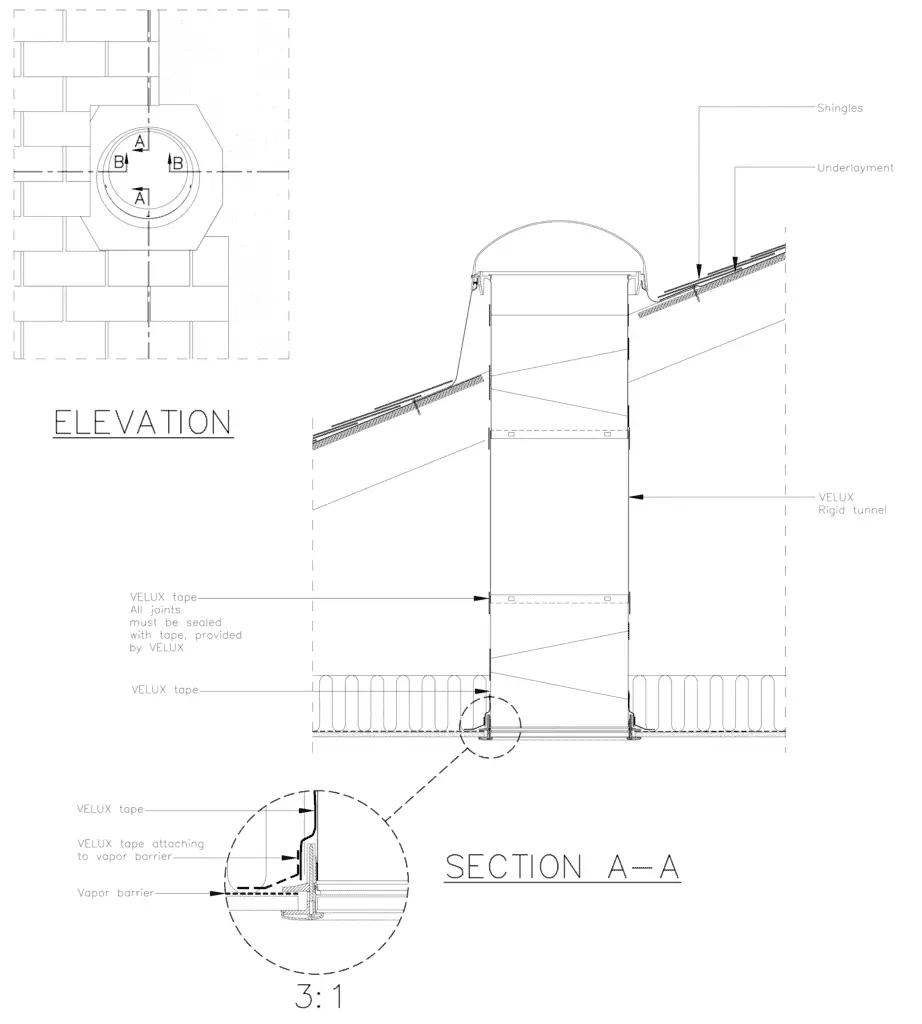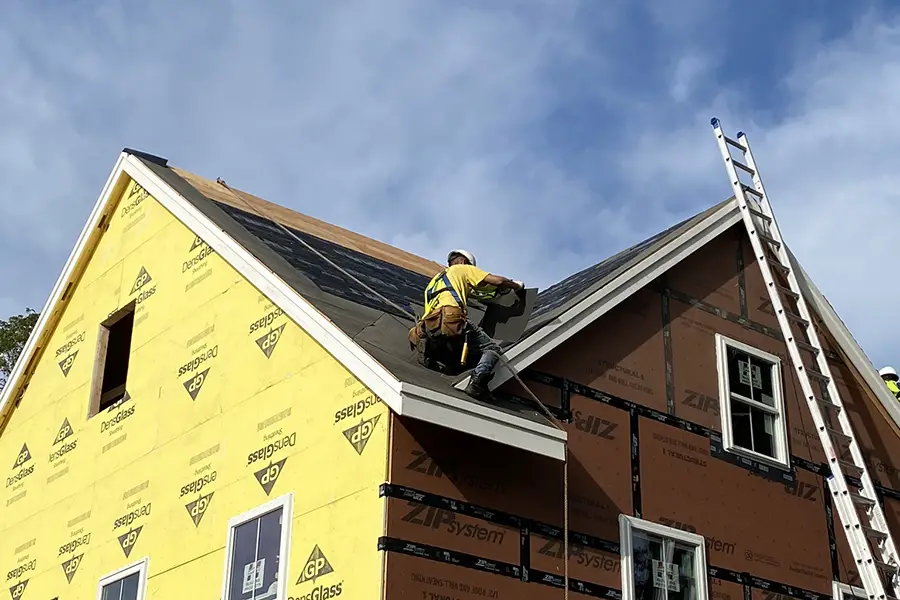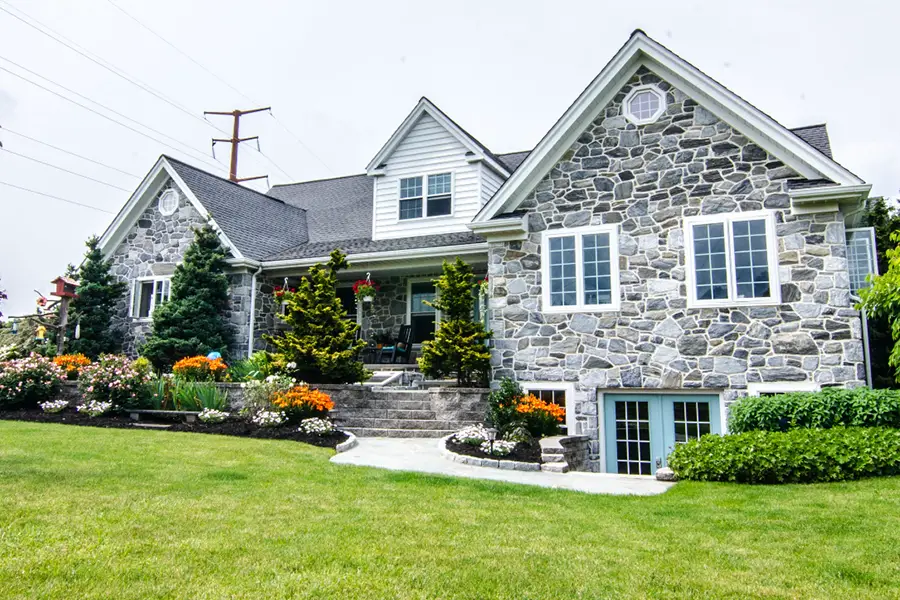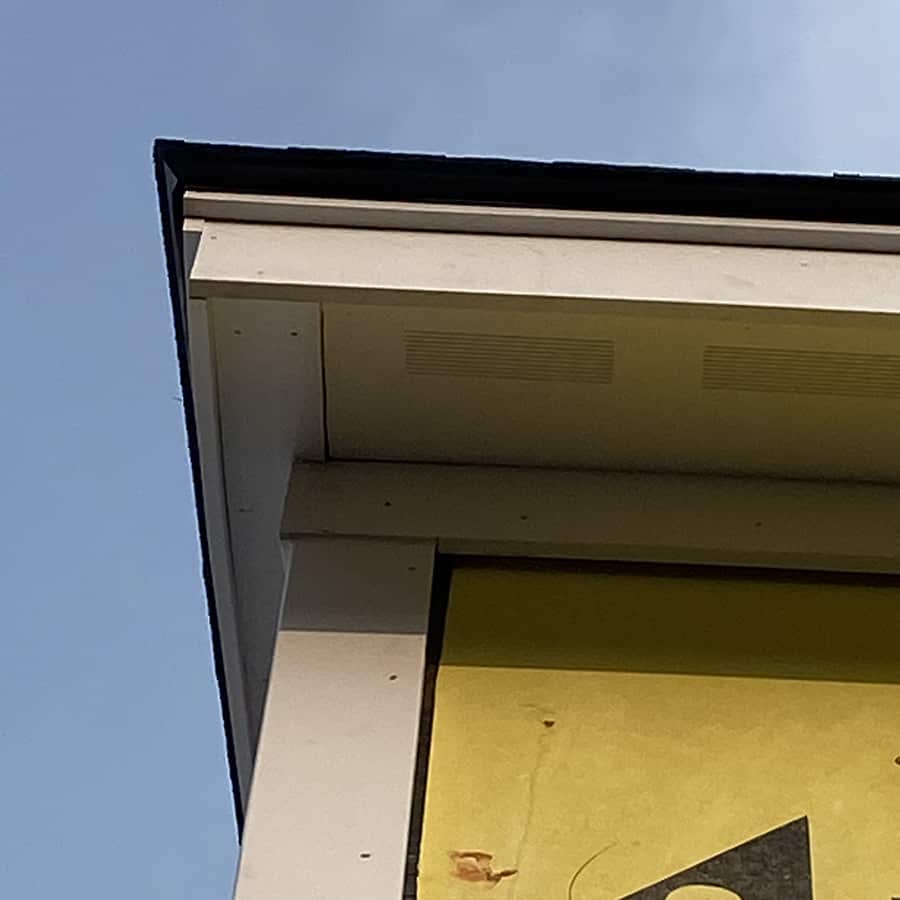We all know that sunshine makes us happy. Vitamin D is good for our mental and physical health, and we all feel a bit better, or even great, on a beautiful sunny day. Therefore, bringing more natural light into the home directly from above with skylights is an obvious home value addition for many.
There are two main types of skylights: traditional “window-pane-on-the-roof” skylights, and tubular skylights. Both shine natural light into the home from above, so both can naturally only be installed on the roof, but each one provides a very different quality of light.
Traditional Skylights
Most everyone is familiar with traditional skylights. They add a ton of ambiance, with views of blue skies, treetops, and the night stars. They can be made of acrylic, glass, or polycarbonate, and have three main components: the frame the window sits in, the pane itself, and the flashing on the exterior to keep the window watertight. These start as small as 12”x12” square, and work their way up in size, and they can be fixed pane or vented (operable).

Tubular Skylights
Perhaps less well-known, tubular skylights, also known as sun tunnels or light tubes, are typically never glass. They’re discreet, with no views of the sky, and can almost feel like a standard light fixture. They are made of a polycarbonate or acrylic dome that gathers light where it sits on your roof and reflects it downwards through a sheet metal tube. The light then hits a diffusing lens at your ceiling and is dispersed into the room. Standard diameters for tubular skylights are 10”, 14”, and 21”, and folks typically choose the largest size that will fit between their rafters.

Installation Considerations
These two styles of skylights differ pretty drastically in the intensity of their installation. Tubular skylights could reasonably be a DIY project for a handy homeowner to finish in much less time. Traditional skylights, however, should probably be installed professionally- unless you’re a professional yourself!
Tubular skylights typically come in a kit with the materials and hardware required for installation. The process requires minimal work on the roof and minimal interior finishing, making it an attractive option for a quicker solution.

Traditional skylights, however, are a different ball game, and require more carpentry and finish work.
If you do not already have vaulted ceilings, you will have to create a new cavity in your ceiling for the skylight. This likely requires cutting your rafters, reinforcing or “sistering” the neighboring rafters, and thus reframing a portion of the ceiling/roof. You’ll then have to enclose the cavity, so you’ll need to frame out a box for the new drywall (or whatever your ceiling material is) to anchor to. Spackling, painting, and interior trim work will follow to finish the job.

On the exterior, you or your contractor will ensure the new hole is the right size for the frame of the skylight and that the roof is structurally reinforced to support its weight. After installation, make sure all the proper flashing and/or sealants are installed to the manufacturer’s specifications. You don’t want a missed step causing leaks that allow moisture into your home!
Cost Considerations
As you may now be anticipating, traditional skylights cost more than tubular skylights. On average, a basic 2’x4’ fixed skylight will run you about $1500-$2500, depending the type of glass, size and frame materials. The cost of installing the window itself is higher, but there are also more add-ons with traditional skylights that can bring the price up. You could add UV or other coatings to the pane, shades, or a venting option requiring electricity to be run for its new switch. However, traditional skylights do also offer value for resale, as they’re appealing to most prospective buyers.
Tubular skylights, on the other hand, are nearly half the cost, as they are significantly less labor-intensive to install. A standard 14-inch tube, including all the parts, will cost between $400-$1000 to install, depending on labor and the tube’s specifications.
If you go with the Solatube brand, which is generally recognized as the industry’s leader due to its continuous research and development, your tube will be a bit more expensive. However, while slightly less reflective than Solatube’s product (Solatube 99.7, Velux 98), Velux is right on their tails, and also offers quality products. Either way, while there’s no real tangible resale value for adding a tubular skylight compared to traditional skylights, there is the potential for an energy tax reduction from the energy star rating of the tube.
Pros and Cons: Traditional Skylights vs. Tubular Skylights
It’s no secret that UV rays, while comforting, can also be damaging to building materials, home furnishings, fabrics, and our skin and eyes. As mentioned above, tubular skylights are considered significantly more energy-efficient than their counterpart for the way they capture and diffuse light. The UV rays from the sun are filtered at the dome, allowing the light into the home without noticeable heat gain or loss, a major benefit as energy costs continue to rise.
Because traditional skylights let in about three times as much light as regular windows, unfiltered, direct UV rays blasting into the home all day can cause cosmetic damage as well as heat gain in the home. On the other end of the calendar, in winter, a warm and cozy home could experience significant heat loss as that warm air rises to meet several uninsulated and/or non-energy star skylights. Unmitigated heat gain or loss of course drives up cooling and energy costs.
Just like the “regular” windows in the rest of your house, skylights are also rated for thermal efficiency. When reviewing options, be sure to compare their U-values, or the rate at which a window transfers non-solar heat.
A great, energy-efficient regular window would rate around 0.3, as a benchmark example. For comparison’s sake, a cheap skylight on the Home Depot website offers a u-value of 1.05, while a new (more expensive) Velux skylight that is double-paned and designed for energy efficiency offers .53 for its U-factor. Price doesn’t have to be a determining factor, but be sure to do your homework. Saving $100-$200 now could cost you much more in energy costs in the long run!
Both traditional and tubular skylights can be used in any climate. However, if your area sees extreme cold temperatures or extremely hot temperatures, keep in mind that acrylic doesn’t stand up as well and is prone to cracking from prolonged exposure. On the other hand, polycarbonate is the material best suited for either kind of skylight in areas prone to hurricanes, as it’s the most resilient.
Water condensation is always a concern in homes, but it is easily mitigated for skylights. For a traditional skylight, any issues with condensation forming near the pane can be remedied by using a dehumidifier in the home. For tubular skylights, wrapping the outside of the tube with R19+ insulation will prevent condensation from forming and keep the tube’s mini-environment moisture-free.
| Pros | Cons | |
| Traditional Skylights | – Views of the sky – Venting opportunity for fresh air – Lets in more light overall | – More likely to fail/leak – More expensive for material and labor – UV rays can be damaging – Shades may be needed to control sunlight – Condensation can collect on the glass in winter |
| Tubular Skylights | – Cheaper to install for materials and labor – Even distribution of light (no glare) – Less likely to leak or fail – Easier to install through attics when skylights would be unreasonable – More energy efficient in terms of heat loss or gain | – No views of the sky – No venting opportunities – Not likely to increase property value – Some materials (like acrylic) don’t have the same lifespan as other material options |
The Bottom Line
Ultimately, the choice between the two comes down to your budget and your personal taste. Traditional skylights will offer more ambiance and direct light, while tubular skylights offer an abundance of natural light while remaining energy efficient. Let us know your preference in the comments below!





I really liked your statement that adding skylights would increase the value of many homes by allowing more natural light to enter them straight from above. I was interested to read more about the benefits because my husband said to me at dinner last night that he believes it would be a good idea to have a skylight built in our kitchen next month. I appreciate you educating me on the benefits of roof windows since I was eager to get one for my house.